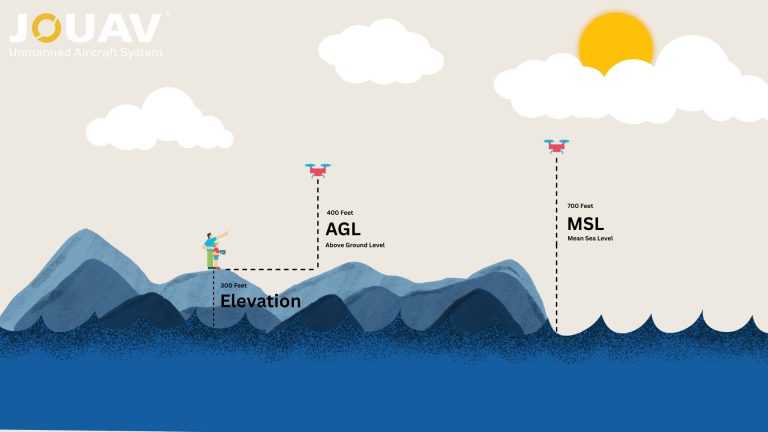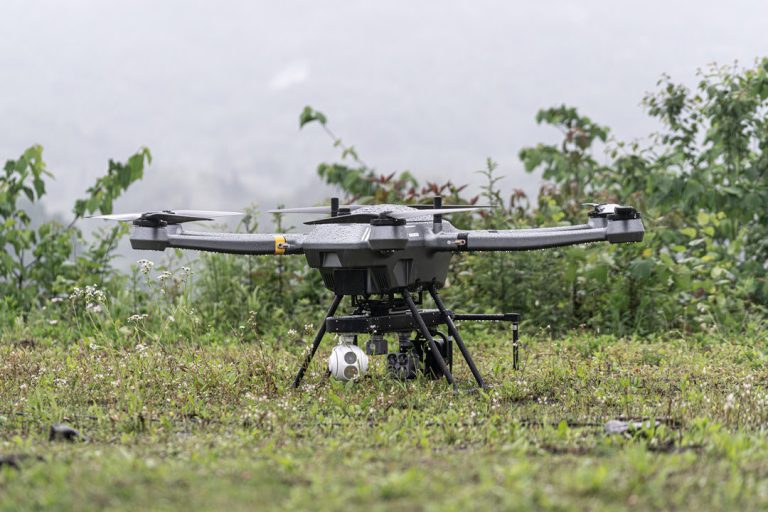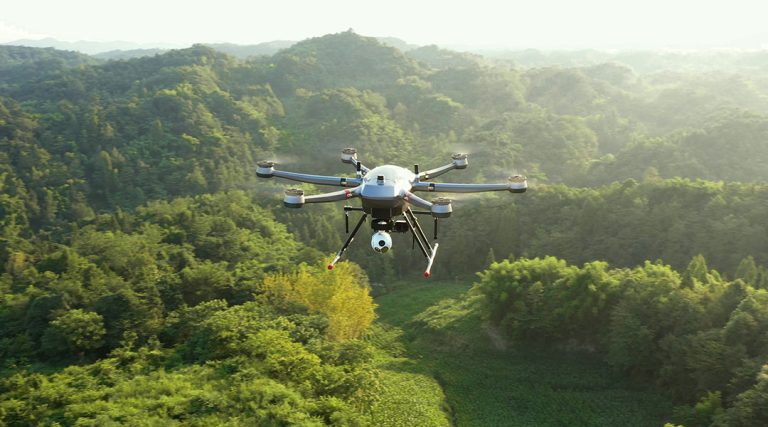The Ultimate Guide to AHRS (Attitude & Heading Reference System)
Ever wondered how airplanes stay stable in turbulent skies, how drones maintain perfect aerial shots, or how autonomous vehicles navigate complex environments with unwavering accuracy?
Simply put, AHRS is a vital electronic system that provides precise information about an object's orientation in three-dimensional space, specifically its attitude (roll, pitch, and yaw) and its heading (direction relative to magnetic or true north).
In this article, we'll break down what AHRS is, how it works, how it's different from similar systems like IMUs, and why it's essential in aviation, drones, robotics, and beyond.
Let's get started!
What is an AHRS (Attitude and Heading Reference System)?
An Attitude and Heading Reference System (AHRS) is a cutting-edge avionics or navigation system that calculates an object's precise orientation in three-dimensional space. At its core, an AHRS answers a critical question: "Which way is up, and where am I pointing?"
By combining data from multiple sensors, it delivers real-time measurements of pitch (tilt up/down), roll (tilt sideways), and yaw (rotation left/right), along with magnetic heading.
This technology is vital for applications where spatial awareness is non-negotiable—such as stabilizing aircraft in turbulence, guiding drones through obstacle courses, or ensuring autonomous vehicles stay on track.
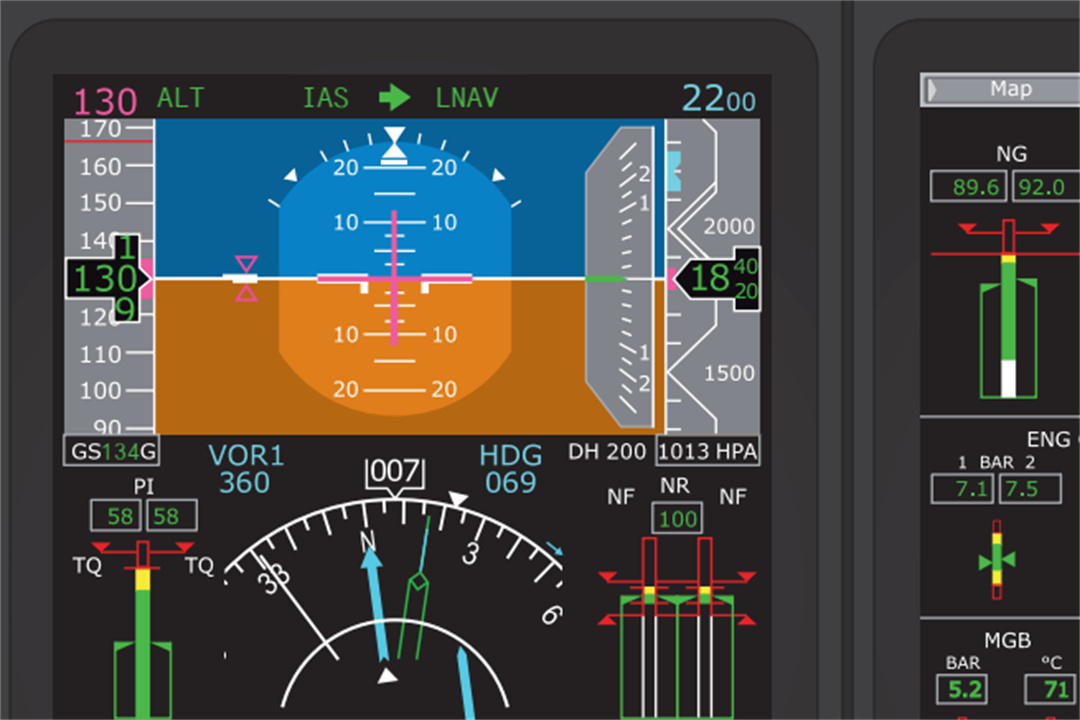
How Does AHRS Work?
An AHRS operates by continuously integrating data from multiple sensors to determine a vehicle's orientation accurately and in real time.
Sensor Data Collection
Gyroscopes
These sensors measure angular velocities around the three axes. They provide rapid, high-frequency data about rotational motion, which is critical for tracking changes in the vehicle's orientation. However, gyroscopes alone suffer from drift, meaning small errors can accumulate over time.
Accelerometers
Accelerometers measure linear acceleration, including the effect of gravity. They help determine the orientation of a vehicle relative to the Earth's surface, particularly for sensing static angles like pitch and roll. Nonetheless, external forces can affect accelerometer readings, making them less reliable during dynamic maneuvers.
Magnetometers
These sensors function as electronic compasses by detecting the Earth’s magnetic field. They offer an absolute reference for the vehicle’s heading (yaw). However, magnetometers are prone to interference from nearby electronic devices or ferrous materials, which can skew the readings.

Sensor Fusion and Data Processing
To overcome the limitations inherent in the individual sensors, AHRS employs sensor fusion algorithms. One of the most effective and widely used approaches is the Kalman filter, though other advanced algorithms can also be applied. Here’s how the process works:
Kalman Filter Implementation
The Kalman filter takes in the raw, noisy sensor data and produces optimal estimates of the system's state by weighing each sensor’s contribution according to its reliability. It continuously predicts the system’s current state based on previous measurements and then updates this prediction using new sensor data. This mathematical model mitigates errors such as drift from gyroscopes and transient inaccuracies from accelerometers and magnetometers.
Real-Time Data Correction
As the vehicle moves, the system constantly recalculates its orientation. The sensor fusion algorithm compares the predicted sensor readings with the actual measurements and applies corrections to maintain an accurate and stable output. This correction loop is essential during rapid maneuvers, ensuring the system remains responsive and accurate under changing conditions.
Output: 3D Orientation
The final output of an AHRS is a precise estimation of the vehicle’s orientation in three dimensions:
- Pitch (Nose Up/Down): Determined by analyzing the distribution of gravitational acceleration as measured by the accelerometers, supported by gyroscopic data.
- Roll (Tilt Left/Right): Also derived from accelerometer data that detects lateral changes, refined with information from the gyroscopes.
- Yaw (Heading): Primarily measured by the magnetometers but stabilized using the dynamic data from the gyroscopes to provide a smooth transition between heading changes.
Diagram Suggestion and Practical Integration
For better clarity, many technical resources suggest visual diagrams that map out the flow from sensor input to the final output. A typical diagram might show a flowchart starting from the collection of raw data from the gyroscopes, accelerometers, and magnetometers, proceeding to the Kalman filter or another sensor fusion algorithm, and ending with the output of the three-dimensional orientation.
Enhanced Stability and Accuracy
By integrating and processing data from multiple sensors, the AHRS mitigates the limitations of each sensor. This synergistic approach allows the system to offer a robust and reliable solution for orientation tracking, crucial in applications where precision and stability are critical—such as in modern aviation, unmanned aerial vehicles (UAVs), marine navigation, and robotics.
Applications of AHRS Across Industries
The Attitude and Heading Reference System (AHRS) is a marvel of modern engineering, blending hardware and software to deliver real-time 3D orientation data. But how does it transform raw sensor readings into precise pitch, roll, and yaw angles?
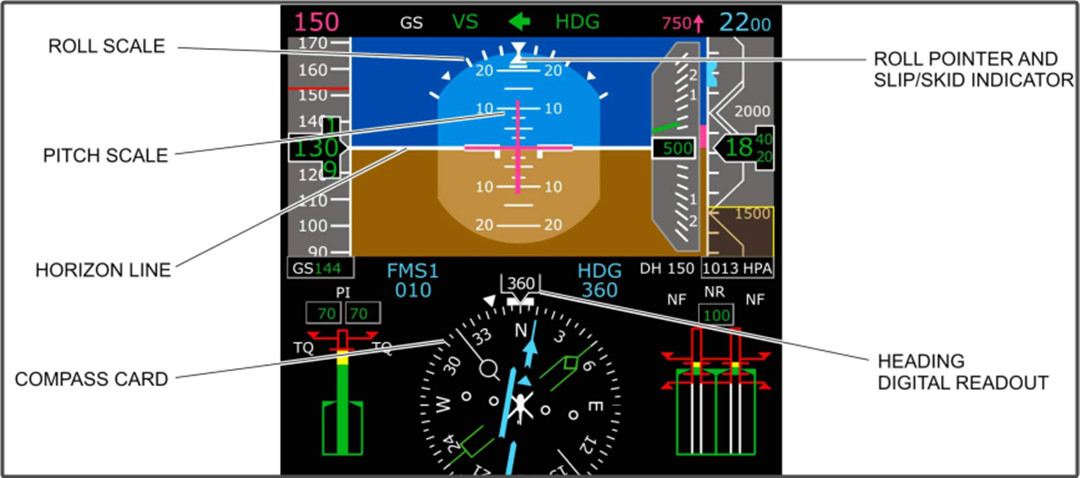
Aviation
AHRS is the backbone of modern avionics, enabling aircraft to navigate safely through turbulence, low visibility, and complex airspace.
- In-Flight Stability: By providing real-time pitch, roll, and yaw data, AHRS feeds critical information to cockpit displays like the Primary Flight Display (PFD), helping pilots maintain spatial awareness during storms or night flights.
- Autopilot Integration: Commercial jets and helicopters use AHRS to automate maneuvers, such as altitude holds or coordinated turns, reducing pilot workload and enhancing fuel efficiency.
In Boeing’s 787 Dreamliner, AHRS works alongside air data computers to form an Air Data and Attitude Heading Reference System (ADAHRS), delivering integrated metrics like altitude, airspeed, and orientation.
Drones and UAVs
From delivery drones to agricultural monitors, AHRS empowers unmanned aerial vehicles (UAVs) to execute precision tasks.
- Stabilization in Wind: AHRS compensates for sudden gusts by adjusting motor speeds, ensuring smooth footage for aerial photography or surveying.
- Obstacle Avoidance: Integrated with LiDAR and cameras, AHRS enables drones to map environments in 3D, critical for search-and-rescue missions or infrastructure inspections.
- Autonomous Missions: Agricultural drones leverage AHRS-guided flight paths to spray crops with millimeter accuracy, optimizing pesticide use.
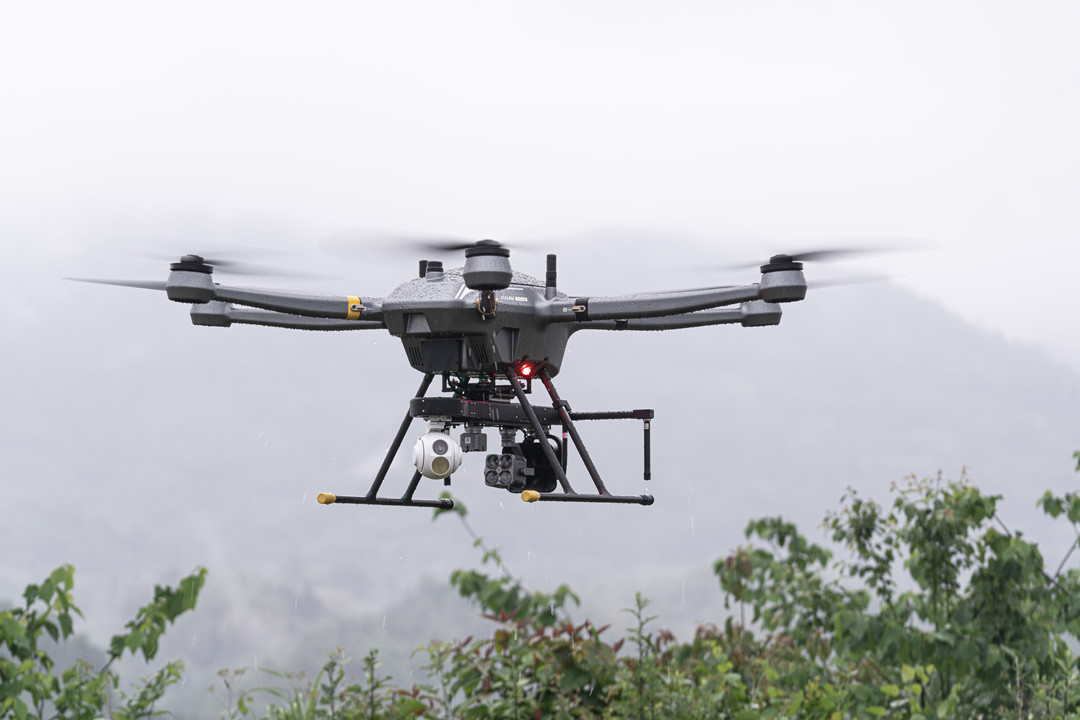
Maritime Navigation
In marine environments, AHRS ensures vessels stay on course, even in GPS-denied or stormy conditions.
- Dynamic Positioning: Offshore oil rigs use AHRS t o stabilize cranes and thrusters, maintaining position despite waves and currents.
- Submarine Navigation: Submarines rely on AHRS for stealthy underwater navigation, where GPS signals are inaccessible and magnetic interference is common.
Cruise ships employ AHRS in automated steering systems to plot efficient routes while minimizing fuel consumption.
Autonomous Vehicles
Self-driving cars and rovers depend on AHRS to “see” their orientation when traditional sensors fail.
- Tunnel Navigation: AHRS provides continuous heading data in GPS-blind zones, such as tunnels or urban canyons, ensuring seamless lane-keeping.
- Sensor Fusion: Combined with radar and cameras, AHRS helps autonomous vehicles detect icy roads by correlating wheel slippage with vehicle tilt.
Robotics
From factory floors to disaster zones, robots leverage AHRS for tasks demanding split-second accuracy.
- Industrial Arms: Robotic arms in manufacturing use AHRS to align components during assembly, reducing error margins in industries like semiconductor production.
- Warehouse Logistics: Autonomous mobile robots (AMRs) navigate crowded warehouses using AHRS to track turns and avoid collisions.
Defense and Aerospace
Military systems demand rugged, fail-safe navigation—a niche where AHRS excels.
- Military Drones: AHRS-guided UAVs perform reconnaissance in GPS-jammed environments, using magnetometers to maintain heading.
- Missile Guidance: Tactical missiles use AHRS for mid-course corrections, ensuring trajectory accuracy even without external signals.
- Space Exploration: Next-gen AHRS with quantum sensors are being tested for lunar rovers, where Earth’s magnetic field is absent.
Benefits of Using AHRS Technology
Here’s a deep dive into the key advantages that make AHRS indispensable across aviation, robotics, marine operations, and beyond.
Precision
AHRS thrives in dynamic environments where split-second decisions matter. Unlike standalone sensors, its fusion of gyroscopes, accelerometers, and magnetometers generates real-time 3D orientation data with sub-degree accuracy.
For instance, in aviation, AHRS enables aircraft to automatically adjust to turbulence by updating pitch and roll angles hundreds of times per second, ensuring passenger comfort and safety.
Similarly, drones filming high-speed action sequences rely on AHRS to stabilize cameras mid-flight, even in gusty winds.
This precision isn’t limited to the skies—surgical robots use AHRS to align tools with micron-level accuracy, minimizing human error during delicate procedures.
Redundancy
When GPS signals fail—whether due to urban canyons, underwater missions, or electromagnetic interference—AHRS becomes a lifeline.
Submarines navigating deep oceans, where GPS is nonexistent, depend on AHRS to maintain course using Earth’s magnetic field. Autonomous vehicles, too, switch seamlessly to AHRS in tunnels or dense urban areas, ensuring uninterrupted navigation.
In defense applications, AHRS allows ISR drones to complete missions even when adversaries jam satellite signals. This redundancy isn’t just a convenience; it’s a safety imperative, making AHRS indispensable in life-or-death scenarios.
Cost-Effectiveness
Modern AHRS systems leverage MEMS (Micro-Electromechanical Systems) technology, slashing costs and weight without sacrificing performance.
Aerospace manufacturers, for example, replace bulky mechanical gyroscopes with compact AHRS units, reducing aircraft weight and fuel consumption.
Consumer drones now integrate AHRS for under $50, democratizing access to professional-grade stabilization.
Even industrial robots benefit, as solid-state AHRS systems require minimal maintenance compared to their mechanical predecessors. The result? Lower operational costs and higher ROI across sectors.
Versatility
AHRS excels where other systems falter. In the Arctic, oil rigs deploy AHRS-rated for -40°C to stabilize equipment in blizzards. Helicopters battling rotor-induced vibrations rely on AHRS to maintain accurate orientation mid-flight.
Even in electromagnetically noisy environments—like factories or ships—advanced algorithms filter out interference, ensuring reliable performance.
NASA’s Mars rovers, adapted for non-Earth magnetic fields, showcase AHRS-like versatility in navigating alien terrains. This adaptability makes AHRS a universal solution for industries pushing boundaries.
How to Choose the Right AHRS System?
Whether you’re designing an autonomous drone, retrofitting a marine vessel, or building a cutting-edge robotics platform, the wrong choice can lead to costly errors, safety risks, or system failures.
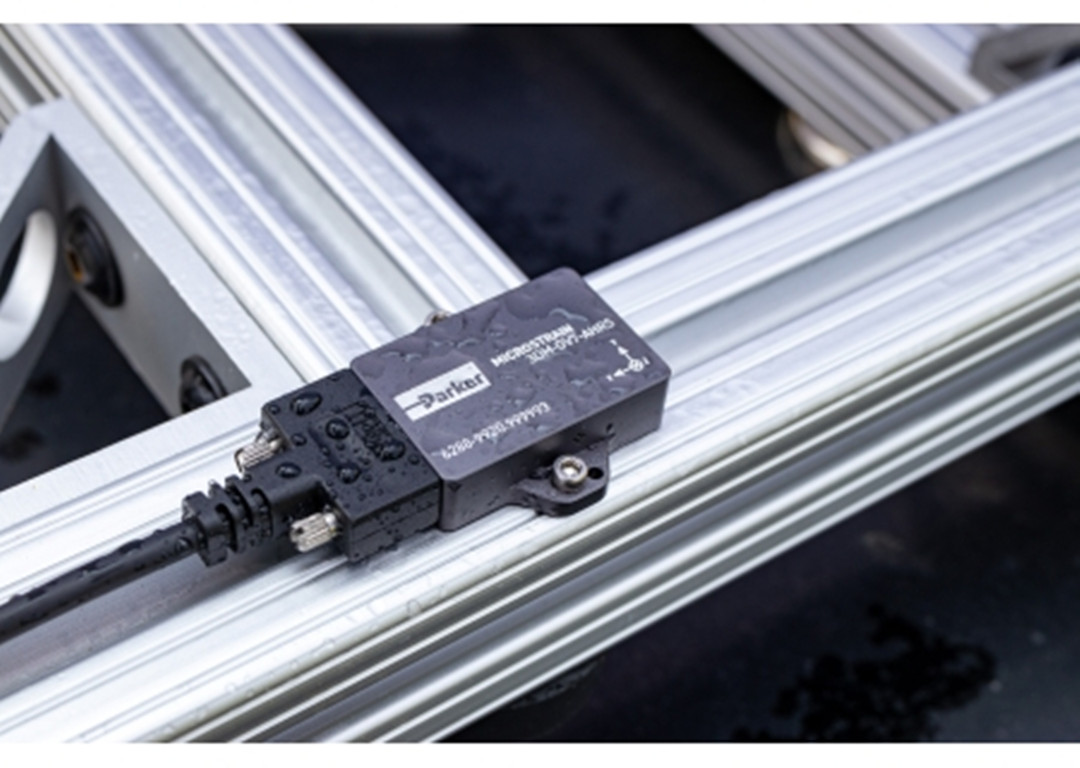
1. Define Your Application Requirements
Every AHRS is engineered for specific use cases. Start by answering these questions:
What environment will it operate in?
- Aviation: Prioritize systems compliant with FAA/EASA standards.
- Marine: Look for waterproofing (IP67+) and corrosion resistance.
- Industrial: Ensure EMI shielding for factories or power plants.
- Space/Defense: Seek radiation-hardened or MIL-STD-810G-certified units.
What level of accuracy is non-negotiable?
- High-precision aerospace systems may require <0.1° error in pitch/roll.
- Consumer drones often tolerate 1–2° errors but need rapid update rates (200+ Hz).
How critical is redundancy?
For GPS-denied environments (e.g., submarines), prioritize AHRS with dual magnetometers or GNSS backup interfaces.
2. Evaluate Core Technical Specifications
Focus on three critical technical elements:
- Sensor Quality: MEMS-based systems are affordable and lightweight, making them ideal for consumer drones, while fiber-optic gyroscopes (FOG) offer superior accuracy for aerospace or defense.
- Sensor Fusion Algorithms: Kalman filters are standard, but AI-driven systems excel in dynamic environments like autonomous vehicles navigating urban areas.
- Durability: Ensure the AHRS can operate within your environmental conditions. For example, oil rig equipment requires systems rated from -40°C to 85°C and high vibration resistance.
Integration capabilities are equally vital. Verify compatibility with communication protocols (e.g., CAN bus, SPI) and software ecosystems like ROS (Robot Operating System) to avoid costly retrofitting.
3. Consider Size, Weight, and Power
The physical and operational footprint of the AHRS directly impacts performance. In aerospace or drone design, every gram matters—nano AHRS units under 50 grams reduce battery drain and extend flight times.
Conversely, industrial systems might prioritize robustness over miniaturization, opting for larger housings with enhanced shielding against electromagnetic interference.
Power consumption is another key factor: wearable tech or IoT devices often require sub-1W systems to preserve battery life.
4. Analyze Total Cost of Ownership
While upfront costs are a consideration, long-term expenses like calibration, maintenance, and upgrades often determine ROI.
A $10,000 FOG-based AHRS might seem expensive initially, but its slower drift and infrequent calibration needs could save thousands annually in aviation.
Conversely, a 300 MEMS unit for a hobbyist drone offers adequate performance without unnecessary features.
Factor in hidden savings, too: a lightweight AHRS on a delivery drone can reduce energy use, enabling longer missions and higher payload capacity.
5. Verify Certifications and Compliance
Industry-specific certifications ensure reliability and legality.
Aviation systems must meet FAA or EASA standards, marine units require IMO compliance, and industrial AHRS in hazardous environments need ATEX or IECEx certifications.
Non-compliance risks operational shutdowns, fines, or safety failures—especially in regulated sectors like defense or aerospace.
6. Test Real-World Performance
Before committing, validate the AHRS under conditions mimicking your operational environment:
- Dynamic Testing: Simulate rapid maneuvers (e.g., drone flips, ship rolls) to check latency and drift.
- Failure Modes: Disable GPS or introduce magnetic interference to test redundancy.
- Long-Duration Trials: Run 24/7 tests to assess thermal drift or memory leaks.
7. Avoid Common Pitfalls
Beware of vendors overpromising accuracy for their price range—a $500 MEMS AHRS claiming <0.5° error is likely misleading.
Similarly, avoid proprietary systems that lock you into exclusive software, limiting future scalability.
Finally, prioritize vendors offering robust calibration tools and support; systems requiring frequent manual recalibration inflate long-term costs.
Challenges of AHRS
Below, we explore the key challenges of AHRS technology, their implications across industries, and emerging solutions to address them.
Sensor Drift and Integration Errors
Gyroscopes, which measure angular velocity, are essential to AHRS but are prone to drift over time due to accumulated errors from noise and inaccuracies.
This drift can result in incorrect calculations of pitch, roll, and yaw, particularly during long-duration operations.
In aviation, this can mislead pilots during extended flights, while autonomous drones may veer off course in prolonged missions.
To mitigate this, sensor fusion techniques combine data from accelerometers and magnetometers, and advanced algorithms like Kalman filters can help correct errors in real time, improving system accuracy.
Magnetic Interference and Environmental Noise
Magnetometers, used to determine heading relative to Earth's magnetic field, are vulnerable to interference from nearby electromagnetic sources, such as motors or power lines. This interference can lead to incorrect yaw measurements.
In applications like submarine navigation or industrial robotics, this can compromise operational safety and efficiency.
Solutions like hardware shielding can protect magnetometers from electromagnetic interference, while adaptive algorithms can temporarily reduce the reliance on magnetometer data when interference spikes, ensuring more stable performance.
Calibration Demands
Accurate calibration is crucial for aligning AHRS sensors with their operational environment. However, external factors like temperature fluctuations, mechanical stress, and magnetic anomalies can cause calibration drift over time.
For instance, agricultural drones operating in changing weather conditions may require frequent recalibration, and spacecraft transitioning from Earth's gravitational field may face calibration challenges.
To address this, auto-calibration systems that adjust using gravitational or geomagnetic references are being developed, along with temperature compensation techniques that help maintain calibration despite environmental shifts.
High Computational Load
Sensor fusion algorithms, such as Kalman filters, are necessary for combining data from multiple sensors but require significant computational power. This can cause latency in systems with limited processing resources, such as micro-drones or wearable devices.
In autonomous vehicles, delayed orientation updates can lead to accidents, while high-speed robots may struggle with real-time responsiveness.
To reduce latency, edge computing can offload AHRS tasks to dedicated processors, while simplified algorithms like complementary filters can be used in low-power applications to balance accuracy and computational efficiency.
Environmental Extremes
AHRS systems often face challenges when operating in extreme conditions like high vibrations, temperature fluctuations, and pressure changes. These factors can introduce noise or strain sensor components, compromising the accuracy of orientation data.
For example, in polar regions or desert environments, temperature extremes can affect sensor performance, making AHRS data unreliable.
To overcome this, ruggedized designs that meet military standards for shock and vibration resistance are being developed, alongside sensors capable of operating in a wide temperature range (e.g., -40°C to 125°C).
What is the Difference Between IMU and AHRS?
Both AHRS (Attitude and Heading Reference System) and IMU (Inertial Measurement Unit) are designed to measure the orientation and motion of vehicles, but they have distinct architectures and purposes that make them suitable for different applications.
| Feature | AHRS | IMU |
| Output | Processed orientation (pitch/roll/yaw) | Raw sensor data (acceleration, angular rate) |
| Reference Frame | Earth’s gravity & magnetic field | Generic inertial frame |
| Sensors | Gyros, accelerometers, magnetometers | Gyros, accelerometers |
| Processing | Onboard fusion (e.g., Kalman filter) | External processing required |
| Calibration | Auto-calibration via Earth's fields | Requires post-processing/hardware |
| Best For | Aviation, drones, real-time systems | Robotics, mobile mapping, flexible systems |
| Accuracy | High (corrected by references) | Degrades without recalibration |
System Purpose and Reference Frames
AHRS systems provide comprehensive attitude information—roll, pitch, and yaw—by referencing stable external fields such as the Earth’s gravity and magnetic field. This built-in reference makes AHRS ideal for applications like aviation and UAVs, where consistency and stability are critical.
However, this dependency means that the system’s accuracy can be affected in environments where those natural references deviate or are less predictable, such as at very high latitudes.
IMUs, on the other hand, capture raw motion data—acceleration and angular velocity—relative to an inertial reference frame. They do not inherently rely on the Earth's magnetic or gravitational fields. Instead, IMUs provide unprocessed sensor outputs, which are then calibrated externally.
This approach allows IMUs to be more flexible in a broader range of applications, including mobile robotics, marine navigation, and areas where post-processing is preferred for tailored solutions.
System Composition and Sensor Integration
Both systems incorporate similar sensor elements such as three-axis gyroscopes and accelerometers. The distinction is enhanced by the inclusion of a magnetometer in AHRS systems—often referred to as an electronic compass.
This extra sensor plays a crucial role in correcting gyroscopic drift by continuously calibrating the heading based on the Earth’s magnetic field, ensuring consistent long-term accuracy.
Data Processing and On-Board Computation
IMUs relay raw sensor data—three-axis acceleration and angular velocity—which must be processed by an external system to compute the orientation and position. This means that while IMUs are versatile, they require additional computational resources to convert the raw data into actionable information.
In contrast, AHRS includes an integrated processing unit that employs sensor fusion algorithms, typically using an extended Kalman filter. This on-board processing corrects errors like sensor drift and noise, delivering real-time, refined orientation data. The fusion of data from multiple sensors makes the AHRS output more accurate and immediately actionable.
How Much Does an AHRS Cost?
The price of an Attitude and Heading Reference System (AHRS) varies based on its application, sensor quality, and features:
- Consumer/Small UAV Systems: $100 - $500, with basic sensors and fewer features.
- Industrial/Commercial UAV Systems: $500 - $5,000, offering better accuracy, sensor fusion, and environmental resistance.
- Aviation/High-Precision Systems: $5,000 - $50,000+, featuring high-accuracy sensors, redundancy, and advanced algorithms for critical applications.
- Custom/Specialized Systems: $100,000+, tailored for extreme conditions or unique applications (e.g., space, military).
How Often Should AHRS Be Calibrated?
The calibration frequency of an AHRS depends on the application, environment, and sensor type:
- Aviation & Aerospace: Recalibration may be needed before and after long flights or significant maneuvers to ensure accurate data.
- UAVs: Drones typically require recalibration after significant temperature changes, physical shocks, or extended periods of inactivity.
- Industrial Applications: Systems in environments with vibrations or temperature fluctuations should be recalibrated regularly, potentially before each mission.
Modern AHRS systems with auto-calibration can adjust sensors automatically, reducing the need for manual recalibration.
Can AHRS Work Without GPS?
Yes, AHRS can work without GPS, but its functionality is limited to providing orientation data (pitch, roll, yaw). Without GPS, AHRS cannot track absolute positioning or correct heading errors caused by gyroscope drift over time.
In GPS absence, the system may accumulate inaccuracies, especially during long operations. However, AHRS still functions for relative orientation control in environments where GPS is not needed.
To mitigate drift, systems often use sensor fusion or integrate with other technologies (e.g., LiDAR or visual odometry). For precise navigation, GPS is typically required to correct errors and provide position data.



